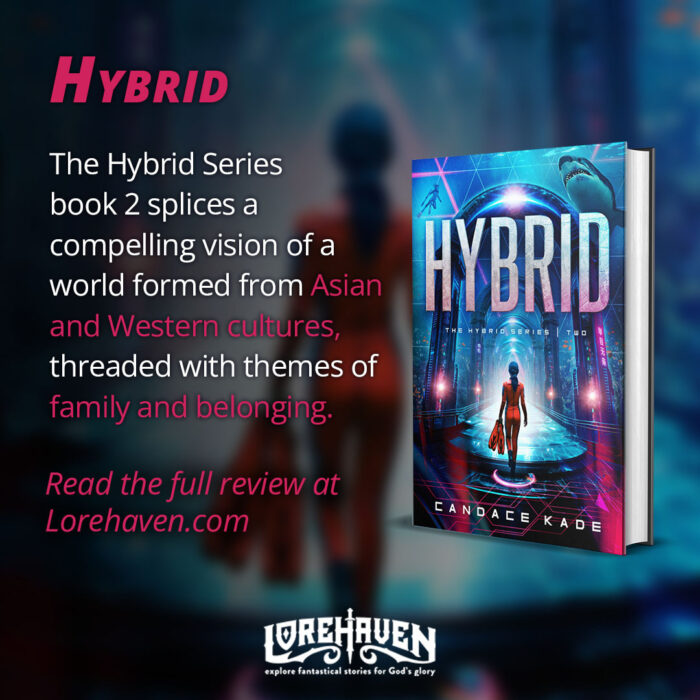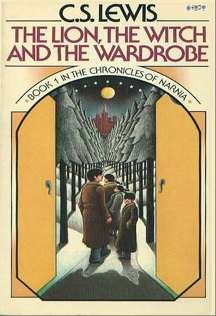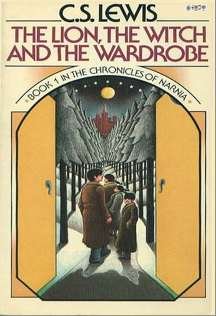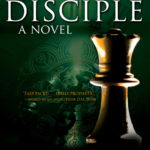Allegory and The Gospel
Anyone familiar with J. R. R. Tolkien’s thoughts on C. S. Lewis’ Narnia books knows one of this complaints about them were they were too overtly allegorical. What he meant by that are the obvious references to Christian people and themes in a didactic manner. An obvious example is that Aslan represents Christ, and how Aslan gives his life up to save Edmund from the White Witch is an obvious allegory of the penal-substitutionary understanding of the atonement of Christ on the cross.
It should be noted that Lewis didn’t see these things strictly as allegory. Louis A. Markos explains what Lewis meant by this statement:
According to his creator, Aslan is not an allegory for Christ but the Christ of Narnia. The distinction is vital. Were Aslan only an allegory, a mere stand-in for the hero of the Gospels, he would not engage the reader as he does. In fact, as Lewis explained, Aslan is what the second person of the Trinity (God the Son) might have been like had he been incarnated in a magical world of talking animals and living trees.
Of course that does nothing to address Tolkien’s concerns about the overtness of the subject matter. Tolkien preferred to bury his analogies deeper into the story, or to put it in modern terms, that such overt analogies to Christian persons or theologies makes the story too preachy. In essence, Tolkien and Lewis were having the same debate we’ve seen in our day between overt Gospel stories in fiction as opposed to subtle Christian world-view influence.
So How Does a Reader Evaluate the Quality of an Allegory?
First, I’ll attempt to define the word allegory so that we’re on the same page.
Allegory is a complex metaphor.
In my Biblical Interpretation class in seminary, the following distinctions were made.
- A simile is comparison of one thing to another in order to use that which is familiar to understand the less familiar. The key phrase often used in a simile is X is like Y. A biblical example would be Jesus’ statement, “The kingdom of heaven is like . . .” Usually they are to make a specific point or illustrate a truth.
- A parable is an extended and more complex simile. You have the simpler ones like “The kingdom of heaven is like a merchant who upon finding a pearl of great price, goes and sells all he has to buy it.” It isn’t that the elements of the parable are meant to represent other people, things, or ideas, but to make a point. A more complex parable is the Sower. This is not to say an allegorical interpretation cannot be made of it, only that as literature, it is not an allegory.
- A metaphor is when one thing is stated to be another in order to illustrate the relationships of something unfamiliar by using that which is familiar. It is usually stated in terms of X is Y. A biblical example would be Jesus saying, “I am the gate.” He of course did not mean He was literally a gate with hinges, but that as a gate provides entrance to the pasture and protection for the sheep, so He is the entrance into the Kingdom of Heaven.
- Likewise, an allegory is an extended and more complex series of metaphors. It is designed to show the various interconnected relationships of the unfamiliar using familiar relationships. The most famous being Jesus’ allegory of the vine and the branches in John 15. Christ is the vine, we are the branches, God the Father is the vine dresser. It reveals the relationships between the Father, the Son, us, and each other by how the vine, branches, and vine dresser relate to each other. Truths are brought to light about each one, but through how they relate to one another rather than how they are like one another.
These are good distinctions when it comes to understanding the type of literature of a particular biblical passage, but perhaps needs more distinctions when we apply it to fiction. All the above forms fall into the general category of an analogy, which is simply comparing one thing to another. It is the usage of the analogy that distinguishes them. In that light, I’d like to provide my own breakdown of types of what we call allegory. Remember, we’re talking allegory as literature, not allegory as an interpretation method. Two different things. The former is intended by the author. The latter by the recipient.
These distinctions illustrate a common misconception of which Lewis’ definition of allegory falls into. An allegory proper doesn’t have a character representing a real-life character, but they are that character in that world. Lewis didn’t intend for Aslan to represent Christ, but to be Christ in that story. Which fits into the definition of what an allegory is. To say that Aslan represents Christ is to say that Aslan is like Christ in our world for the purposes of saying truths about who Christ is. Then it becomes more about simile and parable in intent.
That distinction can, however, help us to see what is a true allegory as opposed to other types of analogies. When it is obvious the author wants you to understand that something is something as it is in our world, it is an element of allegory. When it is clear it is like something else in our world, it is more akin to a simile or parable in order to illustrate a truth or moral.
Speculative fiction uses allegory in three main degrees.
- Full Allegory – The story as a whole is allegorical. An example of that would be Pilgrim’s Progress which in its entirety is meant to be an allegory of the Christian life and salvation.
- Integral Allegory – The story contains allegorical elements as a major component of its storyline. I would classify Lewis’s Narnia series more into that level. While some characters and events are meant to be allegorically understood, not all parts are. That doesn’t preclude an overall correlation like The Magician’s Nephew being illustrative of the Creation narrative, only that Lewis didn’t intend for every aspect and character of that story to be in Narnia what it is in our world, despite the attempts of some to interpret it that way.
- Incidental Allegory – The story contains scattered allegorical elements, often not fully correlating to the real thing, but enough to illustrate relational truths. Some of these at times can border more on simile than metaphor. An example would be Gandalf’s sacrificing himself to save the company from the Balrog, dying, and then resurrecting back to life in Lord of the Rings. Tolkien didn’t intend to say that Gandalf was Christ in his world or that this event was a one-to-one correlation to the death and resurrection of Christ, but is allegorical in what the resurrection of Christ means emotionally to Christians. Or should, I might say. Even then, it is obvious that while providing a key turning point in the story, it doesn’t equate to the same level of importance in our salvation history as Jesus’ death and resurrection. So it is only part allegorical, part simile (Gandalf’s death and resurrection is like or a type of Christ’s). There are several of these types of incidental allegories in Lord of the Rings that even Tolkien himself pointed out.
The last type tends to not be so overt. Unlike Narnia, Middle Earth has no one character that is obviously Christ or God in the story, even if you can find some incidental allegories within the events of certain characters, like Frodo’s climbing of Mt. Doom being allegorical of Jesus’ assent to Golgotha, and Sam being allegorically like the man who carried Christ’s cross for Him when His physical body faltered. Only those familiar with the Gospel story would likely see that correlation and illustration of the relationships. For most people, it passes over as just part of the story.
How Allegorical Should Allegory Be?
There is a problem in using allegory. That is, if your goal is to slip the Gospel story in unnoticed by the masses. If the allegory is overt enough, like Lewis’, it is hardly slipping in the Gospel unnoticed save for those with no knowledge of the Gospel story. The allegories hit us over the head with the subtlety of a freight train approaching an intersection.
Likewise, if the allegory isn’t overt enough, the reader will not pick up on it enough to discern the message. In which case it becomes like a tree falling in a forest when no one is around to hear it. Is there a purpose to the allegory if no one gets the message?
As an author who has used allegory, I’ve asked myself the same questions. My Reality Chronicles series is like type #2 above, integral allegory. Not that I have a character in that world who is Christ, but there are intentional allegorical elements in the story (the steam house and the ring, primarily) that I suspect very few have picked up on. There are also incidental allegories, like the events toward the end of book three, Reality’s Fire, that are scattered through the books. Those are probably noticed more by Christians at least. But I fear if people don’t pick up on the clues enough to realize what the steam house and ring are allegorizing, all the other relationship it points to will be lost to most people, or they’ll see allegories I didn’t intend, perhaps even non-Christian ones.
Part of the risk, I suppose, of this writing endeavor. I comfort myself that Christ had the same issues, and trusted that those who had ears to hear would get His points in the parables. If the questions of the disciples were any indication, not a lot of them did get His point.
But perhaps that is the true value of a good allegory. Those who are in a place to receive the message will discover it and it will have its intended impact as God uses it. Those who don’t will just see them as simple morality tales, or fairy tales of interest.
As a reader, what type of allegory do you find most compelling? Are there some you can point to that have had a profound influence upon your walk with God?











































The thing that interests me about this, Rick, is that the overwhelming majority of Tolkein readers have no idea it contains any Christian elements at all. And in fact some find it easy to harmonize his worldview with neo-pagan beliefs.
Lewis’ work is distinctive in that it is considered a classic and is widely read even by non-Christians. Yet everyone (or almost everyone) knows Narnia has Christian meaning.
I would say as a model to emulate for me, Lewis was much more on-track than Tolkein. Though of course he and his writing had limitations.
So I’d say what you called “Integral Allegory” is a worthwhile method–and does not require a writer to be condescending to the reader.
Good points, Travis. It should be noted that audience does play a part in how allegory is consumed. Children are less likely to initially get the allegorical nature of something, but as they grow up, it can become evident and have an impact. True also of the person who has no knowledge of the Gospel. In either case, it becomes a point of new and richer meanings emerging to the person when they are ready to see it rather than it coming across as an overt attempt to be covert in spreading the Gospel.
Terrific post, thank you.
Like the commenter above said, many readers have no idea there are any Christian elements in LOTR, though some of my devote Roman Catholic friends say that the entire book ‘breathes’ Catholic.
Likewise, I’ve encountered many people who were brought up with no religious training whatsoever who said, “I had no idea that THE LION, THE WITCH, AND THE WARDROBE had any religious elements when I read it as a kid!”
I think allegory is a wonderful thing to weave into our writing, but it should never get in the way of writing a compelling story. To a certain extent, comparing Tolkien and Lewis is choosing apples and oranges. LOTR is a book written for adults. Narnia was a series for children. Generally, adults buck at allegory more than children do, so Lewis could be much more open with his Christianity and still be acceptable to most readers.
We should also recognize that they were writing in a very different era, when religion was much more publicly acceptable. For writers today, allegory must be incredible subtle or we risk being shelved in the Christian ghetto at Barnes & Noble. Which brings us back to that most important of all points — allegory is a wonderful thing, but it should never get in the way of writing a compelling story accessible by a 21st century secular audience, because even Christians seem to avoid speculative fiction that is too overtly Christian and nothing screams Christian ghetto like ham-handed full allegory.
Thanks, Lela, for your thoughts. Good points, all.
Of course, I wasn’t so much comparing them directly, except as they use allegory, but more pointing to the problems Tolkien didn’t like about Lewis’ more overt use of allegory. Tolkien also didn’t want to write for children which Lewis did, so it is no surprise, even in his time, that he favored a more “buried” use of it.
But I would like to hear your thoughts on when allegory can become so obscure as to be of no consequence. For example, in my book, Reality’s Dawn, I introduce the steam house in the first chapter. Allegorically, it is a baptistery. Clues to that link is the eight-sided construction of building. Early Church baptisteries were eight-sided. There is more than just that, but my feeling is very few people will know enough about ancient baptismal fonts to make that connection, though it is possible by other things that result from the steam house that they could arrive at the same conclusion.
So can an allegory be so obscure that no one gets it, or is it more like hidden easter eggs in the story that eventually, should I ever be fortunate enough to be more widely read, people would study and find?
Ultimately we trust God to use our efforts, such as they are, to help people make that journey to God. Nothing is wasted in that sense. As a matter of fact, who knows, but that in Heaven we’ll have study groups on stories written in this life. If true, my guess is God’s top 100 will look nothing like our top 100.
That said, I would think a too obscure allegory could be as ineffective at spreading the Gospel as a more “ham-fisted” effort. Maybe more so. Food for thought.
Let’s suppose someone has no idea that, for example, Gandalf could be a type of Christ when he stands against the Balrog and goes through quasi-death and resurrection. Nonetheless, this person will be able to see that Gandalf is modeling self-sacrifice. Having become inured to the concept, they may find themselves more drawn to the ultimate self-sacrificial hero, who is Jesus, when they discover that He exemplifies similar qualities. What I’m getting at is that allegories might be worth something even when so obscure that no one finds them out. Not so much allegories of Christian imagery or ritual, perhaps, but any allegory that encapsulates Christian principle.
I can say that I connected with Jesus a little better after becoming familiar with fictional character Artix Krieger the paladin (from DragonFable and other Artix Entertainment games). Now, I have NO idea whether the guy who designed this character is even a Christian, much less whether any allegory was intended. There’s nothing overtly Christian about Artix (aside from the fact that fantasy paladins in general seem to be modeled on the Knights Templar or something similar). He just touched me by dint of being a passionate, self-sacrificial hero who’s more concerned with the common good than himself. At some point I figured out that Jesus was that as well, and I thought, “Well if I’m fond of Artix, I should like Jesus even better.”
Rick, I think WriterOfMinds says what I believe about the power of types—I use that word instead of allegory because it’s not trying to be a representation of a Christian specific but an example. Here’s the line:
So, using Scripture, King David is a type of Christ, not because he sacrificed himself (he didn’t) or was perfect (he wasn’t). Rather, he embodied the truth that God is sovereign, that Christ comes from lowly birth, through adversity, to one day reign over His people.
This may be what you referred to as incidental allegory. I see it as a powerful way to communicate Biblical truth to those who would never walk into a church or open a Bible. But through a story they can understand that a great hero will come to undo the wrong, to defeat the dragon, to take the throne.
It is the same stuff of the myths C. S. Lewis loved so much. When he finally connected the dots, he said of the gospel message that it was the True Myth. That myth making based on Christian principles is what I think our Christian speculative fiction needs more of.
Becky
Yes, types is something I didn’t address specifically. Types are of course different from allegory. I think incidental allegory can contain more than just allegory, so yes, would likely include types.
My definition of a type is that it is a comparison of two events or people for the purpose of illustrating truth through principles, as opposed to relationships as in an allegory. In one sense, it is another form of an extended simile. So when Paul uses Ismahel and Isaac as a type of grace and law, it is to show that the principles at work in that situation compare with the principles at work in grace and law.
One could postulate that it is still dealing with relationships, which would be true, so has some elements of allegory in it, but it is never stated in the form of an allegory–Ishmahel is the Law, Isaac is grace.
Of course in fiction, it would be rare for an author to state it in that way, so a lot of it goes back to what in the author intended. But I’d say that by the nature of fiction and being in story, such things tend to be assumed as allegory. Which as I pointed out in my article, doesn’t mean something is representing something else, but is that something else.
But I think you make a good point. A lot of what I would call incidental allegory is more pointing toward types than strict allegory as such. So like in my third book, when Kaylee takes the ring into Hades, that whole story is a type of what happened when Christ went to Hades, especially since in that world, that had already happened. There are metaphors scattered through the story, but the whole event isn’t an allegory in the sense of saying Kaylee is Christ, the Dying Tree is the cross, even though those correlations are there. I could even point to Gabrielle as a type of Christ on several levels.
Within a story, I guess it depends on how connected the events and people are to the real events and people the story is pointing to. So while one could say Gandalf’s death and resurrection is a type of Christ’s, it is clear from the context of it that Tolkien didn’t intend for Gandalf to represent Christ or to be Christ in that world. Whereas Lewis did intend Aslan to be Christ in Narnia, and works to keep that consistent with how he understands Christ would act in that world, so it is an allegory.
Good thoughts. Thanks for helping me to think through this a bit more. 🙂